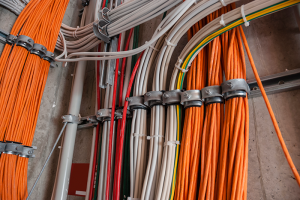How efficient is your liquid oxygen system?
How efficient is your health facility’s liquid oxygen system? And in cases of increased usage of liquid oxygen, how can you detect if it’s simply due to factors such as greater demand created by COVID-19, or if it’s caused by excessive leakage due to issues within the system itself?
The recent increase in patient demand for oxygen has certainly pushed liquid oxygen systems to their limits, and, in many cases, exceeded designed capacities. That can be a self-perpetuating problem because the efficiency of the vaporizer process can be severely impacted when higher demand creates excessive amounts of ice on vaporizer fins that are designed to cool the system. Likewise, older tanks could have developed vacuum seal problems and be leaking excessively.
If a facility leases itsr liquid oxygen system and the company being leased from is responsible for maintenance and repairs, how can facilities managers know that the equipment is functioning efficiently? Sure, a bill for the liquid gas when the tanks are refilled will arrive, and the respiratory therapy department may send reports about how many liters per minute of oxygen gas are being consumed by patients after the oxygen is vaporized. But what happens in between?
Determining what happens in the black box between liquid oxygen tank refill measurements and consumption of vaporized oxygen gas by patients can be a daunting task.
Joshua Brackett, co-founder and facilities engineer of Legacy FM, explains the problem this way: “We can track, trend and understand how much we’re losing. We’re tracking the pressure in the tank as a part of regular rounding. So, we can calculate that loss, but who’s doing that? We’ve turned a blind eye to it as part of the cost, but do we really have to? There’s nothing in the code or in the manufacturer’s specifications, no recommendations on testing pressure release valves. Where are the checks and balances? We have a company coming in and doing turnkey service.”
Some release of pressure from the tanks, Brackett says, is normal.
“The thanks are painted white to reflect the sun,” he says. “But at some level heat still increases the pressure, and the valve releases it so that it doesn’t turn into a bomb.”
As Tony Moiso, director of facilities management at the Pali Momi Medical Center in Hawaii explains, “All cryogenic tanks will build up head pressure, the amount [of which depends] on usage and tank efficiency. If the pressure exceeds the maximum limit (250 PSI on our system), then the pressure is released and oxygen is vented into the atmosphere. This is referred to as boil-off. The typical boil-off rate of a new tank is 0.35%.”
According to Moiso, who has recently dealt with liquid oxygen issues at his medical center, the first step in figuring out if a facility’s usage is due to excessive leakage from the tanks is to work with their supplier to verify the tank size and vaporizer capacity. Moiso and his team created a calculation table to determine oxygen usage by working from literature provided by their vendor and working closely with the respiratory manager at their hospital. See the “Oxygen concentrator relieves med-gas issue article” for background information about how and why that table was created and utilized.
The American Society for Health Care Engineering has collected and compiled information from a variety of sources to help understand and troubleshoot liquid oxygen usage. See the following resources for helpful information:
- Ventilator capacity for existing medical gas systems. A tool, provided by Kaiser Permanente National Facilities Services, provides ventilator capacity based on piping sizes to assist in determining how many ventilators can be served by an existing medical gas system in a given patient care area.
- Sizing Medical Gases for COVID-19. This article published in the Med Gas Insights and provided by BeaconMedaes seeks to explain how to size medical gas systems for an emergency unit.
- Medical Air and Oxygen Capacity Assessment Tool. This too developed by Pali Momi Medical Center helps hospitals and health systems evaluate piped medical gas system capacity




